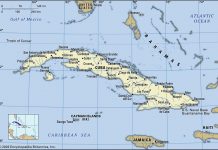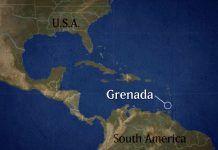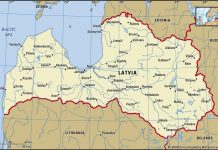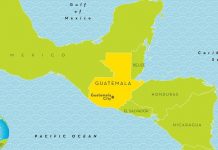Republic of Croatia
Capital: Zagreb
Area: 56,538 sq. km/21,829 sq. miles
Population: 4,504,000
Population density per sq. km./sq. mile: 80/206
Ethnic composition
In 1991, 77% of the population of the republic were ethnic Croats, 12% – ethnic Serbs and 1% – Slovenes. However, during the civil war that began in 1991 and the subsequent “ethnic cleansing” (which included the forcible expulsion of one ethnic group by another to create a more homogeneous composition of the population), significant population movements occurred in Croatia, in areas occupied by Serbs, and neighboring Bosnia, where the resolution of the ethnic conflict was also delayed. More than 300,000 Croats were expelled from hostile Serbian territories within the republic, and about 500,000 refugees from Bosnia resettled in the Republic.
The greatest density of Serbs is observed in the areas bordering Bosnia and Herzegovina. Especially in the region of the Republic of Ukraine, between the Bosnian and Adriatic coasts, as well as in Slavonia and eastern Croatia. However, about 150,000 people left Krajina and moved to Bosnia, Herzegovina and Serbia, to the area conquered by Croatia in August 1995. Croatian has been recognized as the official language since 1991, although Serbian is also widely spoken. Both languages are varieties of Serbo-Croatian, but Catholic Croats use the Latin alphabet, while Orthodox Serbs write in Cyrillic.
Religion
The majority of Croats are Catholics, while Serbs are predominantly Orthodox Christians. There are also small groups of Muslims, Protestants and the Jewish community.
History
During the heyday of Rome, the republic was part of Panponia, and in the VII century. its territory was inhabited by Carpathian Croats. Under the rule of Tomislav in 924, a kingdom was formed, which for the next eight centuries had some autonomy as part of the possessions of Hungary, with the exception of Slavonia, located in the east, captured by the Ottoman Turks in 1526, who held this territory until 1699. In the XIX century . Croatia became part of the Austro-Hungarian Empire of the Habsburgs. After the First World War and the collapse of the Habsburg Empire in 1918 It became part of the new Kingdom of Serbs, Croats and Slovenes, called Yugoslavia since 1929. Catholic Croats refused to accept the power of the Serbs, who occupied a dominant position in the kingdom, because they were Eastern Orthodox Christians. And since the 30s, the Croatian terrorist organization “Ustashi” began its activities. It was she who was responsible for the assassination of King Alexander I of Yugoslavia, who was a Serb by nationality and had ruled since 1929, committed in 1934 during a state visit to France.
During the Second World War, after the occupation of the territory of Yugoslavia by Germany, a puppet state “Greater Croatia” was formed (since April 1941), which was subordinate to the Nazis. It was headed by Ante Pavelik (1889-1959), a native of Herzegovina and leader of the Ustashi organization. This state included most of Bosnia and Herzegovina, part of Serbia, including the territory of the modern republic. More than 500,000 Serbs, 55,000 Jews and thousands of Gypsies were ruthlessly exterminated in death camps set up by the Croatian fascist regime, whose goal was to establish a true Croatian Catholic Republic. The Ustashi state faced fierce resistance from Communist partisans, and then after the civil war was overthrown in 1944.
In November 1945, Croatia became an integral part of the Yugoslav Socialist Federal Republic, in which Marshal Tito — Croat, who led the Partisan Resistance Movement under the Pavelik regime, became the central figure. Together with neighboring Slovenia, Croatia has become one of the richest republics in the federation, with a well-developed agricultural sector, industry and a developing tourist industry on the Adriatic and Dalmatian coasts. The Federal communist leadership of the republic, which had not forgotten the horrors of the Ustasha regime, tried to control the extreme manifestations of Croatian nationalism, equating it with fascism. However, Croats showed obvious dissatisfaction with the fact that the government forced the republic to provide economic assistance to the poorest members of the federation in the east and south, as well as the fact that the federation and even the League of Communists of Croatia (LKH), after the removal of Croatian leaders from the leadership in 1972, were ruled mainly by Serbs. Accordingly, the rise of Croat nationalism has been observed since the 60s. Initially, it had the character of cultural transformations, but since the 70s it has resulted in the form of a spontaneous separatist movement.







































